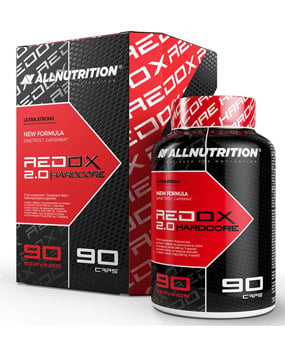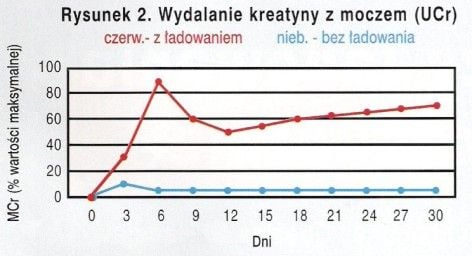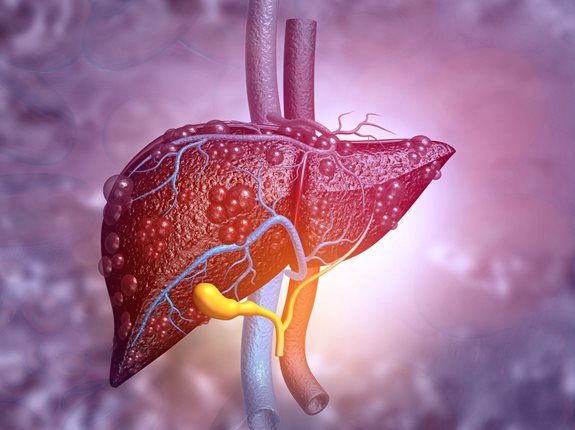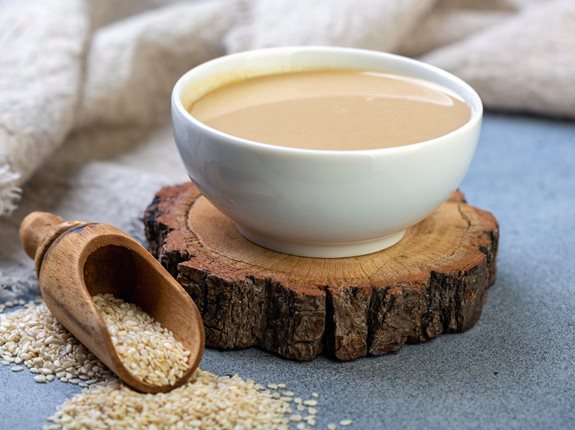Wszedzie i przez każdego promowane sa dwa rózne sposoby stosowania:
->faza ladowania czyli 0.3g/kg/dzien (~20g) przez pierwsze 5-7 dni
w dawkach podzielonych na 5g
a przez nastepne dni nalezy spozywac dawke podtrzymujaca w ilosci 3-5g/dzien
->bez fazy ladowania - caly czas dawka 0.05g/kg/dzien (3-5g/dzien)
Nie daj Bóg jak jedna ze stron jest uparta - często tak bywa - i za nic nie da się jej przetłumaczyć ze obie mają racje!
Na poczatek podstawy:
Is there a rationale for the use of creatine either as nutritional supplementation or drug administration in humans participating in a sport?
Even though no unambiguous proof for enhanced performance during high-intensity exercise has yet been reported, the creatine administration is charged to improve physical performance and has become a popular practice among subjects participating in different sports. Appropriate creatine dosage may be also used as a medicinal product since, in accordance with the Council Directive 65/65/CEE, any substance which may be administered with a view to restoring, correcting or modifying physiological functions in human beings is considered a medicinal product. Thus, quality, efficacy and safety must characterize the substance. In biochemical terms, creatine administration enhances both creatine and phosphocreatine concentrations, allowing for an increased total creatine pool in skeletal muscle. In thermodynamics terms, creatine interferes with the creatine-creatine kinase-phosphocreatine circuit, which is related to the mitochondrial function as a highly organized system for the energy control of the subcellular adenylate pool. In pharmacokinetics terms, creatine entry into skeletal muscle is initially dependent on the extracellular concentration, but the creatine transport is subsequently down-regulated. In pharmacodynamics terms, the creatine enhances the possibility to maintain power output during brief periods of high-intensity exercises. In spite of uncontrolled daily dosage and long-term administration, no research on creatine safety in humans has been set up by specific standard protocol of clinical pharmacology and toxicology, as currently occurs in phase I for the products for human use. More or less documented side effects induced by creatine are weight gain; influence on insulin production; feedback inhibition of endogenous creatine synthesis; long-term damages on renal function. A major point that related to the quality of creatine products is the amount of creatine ingested in relation to the amount of contaminants present. During the production of creatine from sarcosine and cyanamide, variable amounts of contaminants (dicyandiamide, dihydrotriazines, creatinine, ions) are generated and, thus, their tolerable concentrations (ppm) must be defined by specific toxicological researches. Creatine, as the nutritional factors, can be used either at supplementary or therapeutic levels as a function of the dose. Supplementary doses of nutritional factors usually are of the order of the daily turnover, while therapeutic ones are three or more times higher. In a subject with a body weight of 70 kg with a total creatine pool of 120 g, the daily turnover is approximately 2 g. Thus, in healthy subjects nourished with a fat-rich, carbohydrate-, protein-poor diet and participating in a daily recreational sport, the oral creatine supplementation should be on the order of the daily turnover, i.e. less than 2.5-3 g per day, bringing the gastrointestinal absorption to account. In healthy athletes submitted daily to high-intensity strength- or sprint-training, the maximal oral creatine supplementation should be on the order of two times the daily turnover, i.e. less than 5-6 g per day for less than 2 weeks, and the creatine supplementation should be taken under appropriate medical supervision. The oral administration of more than 6 g per day of creatine should be considered as a therapeutic intervention because the dosage is more than three times higher than the creatine daily turnover and more than six times higher than the creatine daily allowance. In this case, creatine administration should be prescribed by physicians only in the cases of suspected or proven deficiency, or in conditions of severe stress and/or injury
http://www.ncbi.nlm.nih.gov/pubmed/10675277
Suplementacja kreatyna zwieksza poziom kreatyny i fosfokreatyny w mięśniach zwiekszajac tym samym calkowita pule kreatyny w organizmie,
co powoduje wzrost poziomu energi, co znowu skutkuje wieksza moca ,sila czy tez powodowac może wzrost wagi ciala
Calkowita pula kreatyny u zdrowego czlowieka (~70kg) wynosi ok.120g
dzienna przemiana kreatyny w kreatyninę wynosi ok.2g (1,7% całkowitej puli kreatyny)
Wnioski takie - aby zachowac staly poziom kreatyny nalezy spozywac mniej wiecej tyle samo ile ulega przemianie do kreatyniny - mniej niz 3g
jezeli brac pod uwage sportowcow to dzienna dawka kreatyny powinna byc dwa razy wieksza niz jej straty - co daje 5-6g/dzien!
Stąd ta magiczna dawka 5g/dzien
Na poczatku trzeba również zaznaczyc ze nie kazdy reguje tak samo na suplementację kreatyną:
-> https://www.sfd.pl/Kreatyna__osoby_odczuwające_działanie_vs._osoby_nie_odczuwający_działania-t704960.html
Sa badania/sa ludzie ktorzy odczuwaja bardzo mocno wplyw kreatyny,ale tez sa ludzie ktorzy odczuwaja slabiej,lub mogole!
Zalezne jest to od wielu czynnikow - z reszta nie wszystkie sa poznane
Male badanie pokazujące wzrost poziomu kreatyny u roznych ludzi:
Creatine ingestion favorably affects performance and muscle metabolism during maximal exercise in humans
http://ajpendo.physiology.org/content/271/1/E31.abstract?ijkey=d95f5b9ea32f7024c7f1065bde9607eab6fe4e98&keytype2=tf_ipsecsha
9 osob stosowalo kreatyne przez okres 5 dni w dace 20g/dzien (4 x 5g)
poziom kreatyny u tych osob wygladal nasyepujaco (przed/po)

uznaje sie ze lepsze efekty udczuwaja osoby ktore maja nizszy poizom 'wlasnej' kreatyny przed rozpoczeciem suplmentacji - ale jak widac osoba nr 2 i 3 - pomimo tego samego poizomu przed
po takim samym stosowaniu
poziom 'po' znacznie sie roznil
Osoby o ktorych poziom zmienil sie o >20-mmol/kg odczuwaly znacznie lepiej wplyw kreatyny niz osobu o ktorych poziom kreatyny zwiekszyl sie w mniejszym stopniu
Kolejna sprawa to mocz:
objetosc moczu o osob stosujacych kretyna znacznie zmalala podczas stosowania kreatyny:

w poczatkowej fazie stosowania kreatyny moze to byc powiazane z szybszym wzrostem masy ciala przez okres kilku pierwszych dni
kreatynina:

poziom kreatyniny byl srednio o 2.8 mmol/d wiekszy niz u grypy placebo
kreatynina stanowi produkt metabolizmu,powstaje w organizmie w wyniku nieenzymatycznego rozpadu fosforanu kreatyny.
Ilość wydalanej w ciągu doby kreatyniny zależy od masy mięśni i jest charakterystyczna dla danego organizmu. Średnio z moczem wydala się ok. 1,7%mg kreatyniny na kilogram masy ciała.
kolejne badanie:
The effects of creatine ethyl ester supplementation combined with heavy resistance training on body composition, muscle performance, and serum and muscle creatine levels
http://www.jissn.com/content/6/1/6
-grupa placebo
-grupa przyjmujaca kreatyna (monohydrat!) z faza ładowania (5dni x 20g/dzien + 42dni x 5g/dzien)
poziom kreatyniny:

-poziom u grupy placebo nie zminil sie - pozostawal w dolnych granicach
-u grupy przyjmujacej kreatyne zwiekszyl sie ale nadal pozostawal w 'normie' -> 0.8-1.3 mg/dL
***********************************************
faza ładowania:
Muscle creatine loading in man
http://www.ajcn.org/content/72/2/607S.full
-grupa przyjmujaca kreatyna w ilosci 4x5g przez okres 6 dni
-grupa przyjmujaca kreatyna w ilosci 4x5g przez okres 6 dni + 2g przez kolejne 28dni

jak widac - po fazie ladowania,przyjmujac w koljenych dniach dawke podtrzymujaca (2g) utrzymany zostal podniesiony poiozm kreatyny
The effects of creatine ethyl ester supplementation combined with heavy resistance training on body composition, muscle performance, and serum and muscle creatine levels
http://www.jissn.com/content/6/1/6
-grupa placebo
-grupa przyjmujaca kreatyna (monohydrat!) z faza ładowania (5dni x 20g/dzien + 42dni x 5g/dzien)

podobnie jak w badaniu wyzej - podniesiony poizom kretyny pozostawal na podobnym poziomie przez caly okres stosowania kreatyny (faza ładowania przez 5 dni + 42 dni faza podtrzymujaca)
bez fazy ładowania:
Stare badanie - z 1996 roku - badano wplyw fazy ładowania lub tez bez fazy ładowania
Muscle creatine loading in men.
The effect of dietary creatine and supplementation on skeletal muscle creatine accumulation and subsequent degradation and on urinary creatinine excretion was investigated in 31 male subjects who ingested creatine in different quantities over varying time periods. Muscle total creatine concentration increased by approximately 20% after 6 days of creatine supplementation at a rate of 20 g/day. This elevated concentration was maintained when supplementation was continued at a rate of 2 g/day for a further 30 days. In the absence of 2 g/day supplementation, total creatine concentration gradually declined, such that 30 days after the cessation of supplementation the concentration was no different from the presupplementation value. During this period, urinary creatinine excretion was correspondingly increased. A similar, but more gradual, 20% increase in muscle total creatine concentration was observed over a period of 28 days when supplementation was undertaken at a rate of 3 g/day. In conclusion, a rapid way to "creatine load" human skeletal muscle is to ingest 20 g of creatine for 6 days. This elevated tissue concentration can then be maintained by ingestion of 2 g/day thereafter. The ingestion of 3 g creatine/day is in the long term likely to be as effective at raising tissue levels as this higher dose.
http://www.ncbi.nlm.nih.gov/pubmed/8828669
Dwie grupy osob:
-faza ladowania
-bez fazy ladowania
suplementacja kreatyna w ilosci 20g/dzien przez okres 6 dni zwiekszyla poziom kreatyny o ponad 20%
od 7 dnia stosowano dawke 2g/dzien przez kolejne 30dni
poziom kreatyny pozostal na tym samym poziomie (+20%)
druga grupa spozywala 3g/dzien (wiecej niz przemienia sie w kreatynine) - stopniowy wzrost calkowitej puli w organizmie na koncu i tak wynosil 20%!
tak wiec czy stosuje sie faze nasycania (5-6 dni x 20g) czy tez nie (stala suplementacja 3g/dzien) - skutkowac bedzie takim samym poziomem kreatyny
z tym ze stosujac dawke 20g ten 'szczyt' osiagnie sie szybciej
a kto jaka metoda wybierze zalezy juz tylko od niego
obie sa dobre!
Long-Term Effects of Creatine Monohydrate on Strength and Power
Sixteen collegiate football players were randomly separated into creatine monohydrate and placebo groups. Supplementation in capsule form consisted of 5 g/d of creatine mono-hydrate or placebo (no loading phase) throughout a 10-week supervised resistance training program. Pretesting and post-testing consisted of the following: weight; body fat estimation; 1 repetition maximum bench press, squat, and power clean; and Cybex testing. Results revealed the creatine monohydrate group was able to significantly increase measures of strength and power and increase body mass without a change in percent body fat, whereas the placebo group showed no significant changes. The results indicate that 10 weeks of creatine monohydrate supplementation while participating in a resistance training program significantly increases strength and power indices compared with placebo supplementation. These data also indicate that lower doses of creatine monohydrate may be ingested (5 g/d), without a short-term, large-dose loading phase (20 g/d), for an extended period to achieve significant performance enhancement.
http://journals.lww.com/nsca-jscr/Abstract/1999/08000/Long_Term_Effects_of_Creatine_Monohydrate_on.1.aspx
suplementacja kreatyna w ilosci 5g/dzien rownie dobrze poprawia osiagi bez koniecznosci stosowania fazy ladowania
górna granica:
The nutritional biochemistry of creatine
'....Recently, muscle creatine accumulation has been shown to be substantially increased by combining creatine supplementation with carbohydrate ingestion, elevating muscle creatine concentration in all subjects close to the upper limit of 160 mmol/kg dm. Creatine supplementation should be viewed as a significant development in sports-related nutrition.'
http://www.jnutbio.com/article/S0955-2863(97)00116-2/abstract
jak wiadomo okolo 95% kreatyny (calkowitej czyli kreatyny + fosfokreatyny) znajduje sie w miesniach
gorna granica magazynowania wynosi ok. 160 mmol/kg
Does dietary creatine supplementation play a role in skeletal muscle metabolism and performance
'.....there is no evidence that increasing intake > 20-30 g/d for 5-6 d has any potentiating effect on creatine uptake or performance. In individuals in whom the initial total creatine concentration already approached 150 mmol/kg dry mass, neither creatine uptake nor an effect on phosphocreatine resynthesis or performance was found after supplementation.'
http://www.ajcn.org/content/72/2/607S.full
dlatego kompletnie nie ma sensu stosowanie dawek rzedu 20-30g przez okres kilku miesiecy po popostu tego poziomu sie nie da przeskoczyc!
nadmiar kreatyny zostanie wydalony!
*******************
suma sumarum:
Nie ma jednej mozliwosci stosowania kreatyny
Nie mozna napisac ze tylko i wylacznie z faza ladowania (nie podając powodów) czy tylko i wylacznie bez fazy ladowania.
Oba sposoby dawkowania sa dobre.
Oczywiscie kazda z tych metod ma swoje za i przeciw.
Najlpeszym sposobem jest metoda prob i blędow - jesli nie dzialają na Ciebie dawki rzedu 5g - moze to znaczyc ze nadal masz zbyt maly poziom kreatyny wiec rozwiazaniem moze byc (ale nie musi!) zrobienie nastepnym razem fazy ładowania.
Jednakze badania pokazazuja ze stosując fazę ładowania - szybciej osiąga sie szczytowy poziom kreatyny w miesniach,wiec tym samym szybciej odczuwamy działanie kreatyny.
Inaczej to przebiegac moze podczas braku fazy ladowania - poziom kreatyny wzrasta stale ale powoli do maxymalnego poziomu.
Pozniej wiec odczuc mozemy dzialanie kreatyny.
Ale koniec koncow - po 8-10tygodniach efekt bedzie podobny - czy to z faza ladowania czy to bez fazy ladowania.
Zarowno w poziomie calkowitej kreatyny,jak i w wynikach - ale jak wspomnialem wczesniej faza ladowania moze dac 'szybszy' efekt.
Zmieniony przez - solaros w dniu 2011-03-19 00:30:47
"Cóż jest trucizną?
Wszystko jest trucizną i nic nie jest trucizną, tylko dawka czyni, że dana substancja nie jest trucizną!".
BLOG: http://www.sfd.pl/t1033576.html


 Krzysztof Piekarz
Krzysztof Piekarz

 ale mam pytanko
ale mam pytanko






